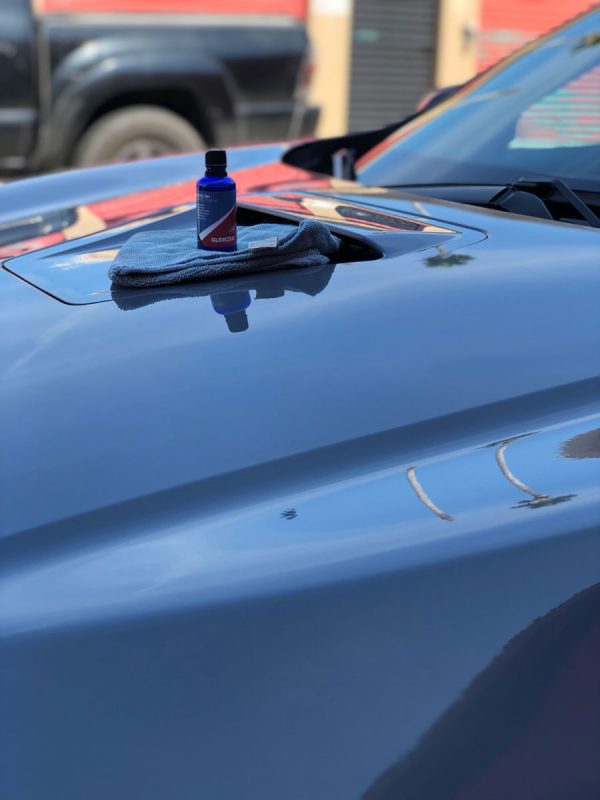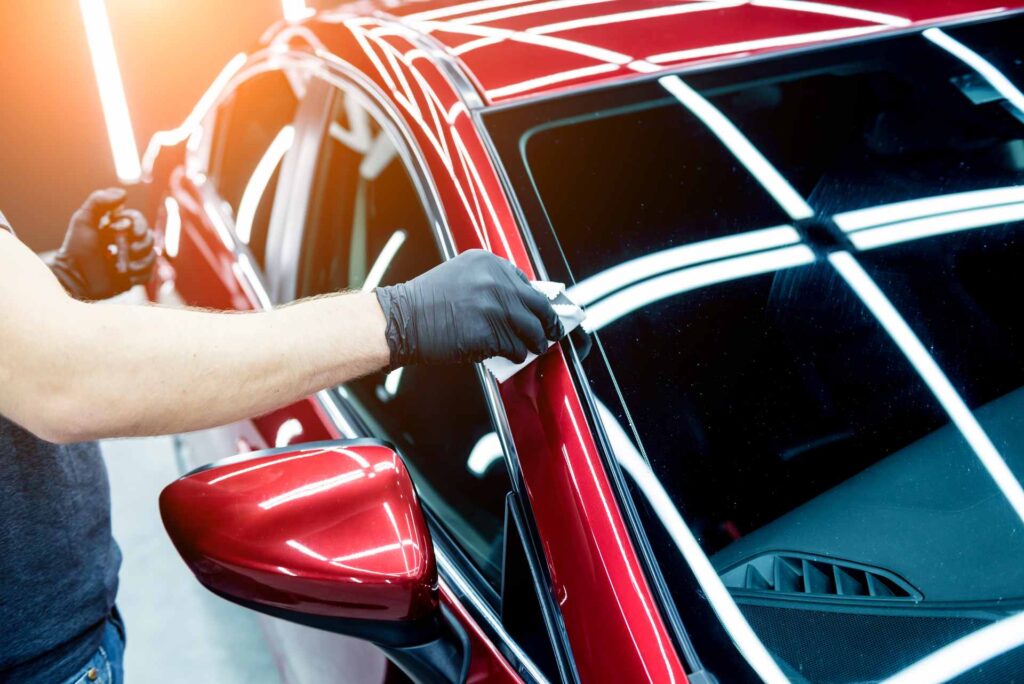The Price of Ceramic Coating: Is It Worth the Financial investment?
The Price of Ceramic Coating: Is It Worth the Financial investment?
Blog Article
The Importance of Ceramic Coating: Shielding Your Cars and truck's Outside With Accuracy
In a period where maintaining the aesthetic and practical integrity of your automobile is paramount, ceramic covering arises as a crucial solution. With its distinct bonding buildings, ceramic coating provides a level of security that much goes beyond traditional waxing methods.
Benefits of Ceramic Coating
When it comes to preserving a vehicle's visual allure, ceramic finish uses considerable advantages. By creating a semi-permanent bond with the lorry's paint, ceramic finishes successfully avoid oxidation and fading, ensuring that the car keeps a glossy, showroom-like finish for an extensive period.
In addition to its safety qualities, ceramic coating supplies exceptional hydrophobic buildings, triggering water and other liquids to grain off easily. This feature streamlines the cleaning procedure, as dust and particles are less most likely to follow the surface area, decreasing the regularity and effort needed for maintenance. The covering's resistance to chemical spots from acidic contaminants like bird droppings and tree sap is one more noteworthy benefit, decreasing potential paint damages.
Ceramic coatings likewise boost scrape resistance, offering a layer that can soak up minor abrasions and swirl marks. This quality is specifically advantageous in keeping a pristine surface, minimizing the likelihood of visible blemishes and maintaining the integrity of the cars and truck's paintwork with time.

Exactly How Ceramic Coating Works
Understanding the auto mechanics behind ceramic covering reveals its effectiveness as a safety solution for lorries. Ceramic layers are essentially fluid polymer applications that chemically bond with an auto's manufacturing facility paint, creating a safety layer. This layer offers as a barrier against environmental pollutants such as grime, dirt, and ultraviolet rays, which can break down an auto's exterior with time. The essential component in ceramic coating is silicon dioxide (SiO2), which originates from quartz crystals and is known for its extraordinary solidity and longevity.
Application of ceramic covering includes a precise procedure. The vehicle's surface area should be completely cleaned up and sanitized to make certain optimal bond. When applied, the fluid polymer creates a semi-permanent bond with the paint, hardening right into a transparent, durable shield. This shield enhances the vehicle's gloss and hydrophobic homes, facilitating less complicated cleaning by causing water and pollutants to grain and slide off easily.
Additionally, the covering's molecular structure offers resistance to minor scrapes and chemical discolorations. Unlike waxes or sealants that rest on top of the paint, ceramic finishes integrate with the surface, supplying resilient defense. This assimilation is essential to its effectiveness, making sure the lorry's surface continues to be immaculate for several years.
Comparing Ceramic Coating to Alternatives
In the realm of auto security, ceramic covering stands as a powerful option when compared to standard options such as waxes and sealants. While waxes use a short-lived lustrous coating, normally lasting just a couple of weeks to months, ceramic finishes offer a longer-lasting remedy, often withstanding for years. This resilience is attributed to the chemical bonding that occurs when ceramic coverings are applied, forming a strong layer that is immune to ecological risks.
Contrastingly, sealants, although more resistant than waxes, still disappoint the robust security supplied by ceramic finishes. Sealants can normally last for up to a year, supplying an artificial guard against certain components. Nevertheless, they do not have the remarkable hydrophobic residential or commercial properties and UV security that ceramic coverings provide.
Additionally, ceramic finishings offer improved scratch resistance, which neither waxes neither sealants can successfully match (ceramic coating). This is especially helpful in preserving a vehicle's immaculate appearance. In addition, ceramic coverings streamline maintenance initiatives by reducing the adherence of dirt and crud, thus promoting simpler cleansing. In summary, while standard waxes and sealers supply standard security, ceramic coatings offer a thorough, lasting solution that substantially maintains the vehicle and improves's outside coating.
Application Refine Clarified
Using ceramic finishing to a vehicle needs a thorough procedure to ensure optimal outcomes and durability. The first step includes completely cleaning up the auto's surface area site web to get rid of dust, oil, and previous waxes. This is vital for making certain the layer sticks effectively. A pH-neutral hair shampoo and a clay bar therapy are commonly utilized to achieve a pristine surface area. As soon as cleaned up, the automobile is dried and polished to remove any type of flaws, as any existing swirls or scrapes can end up being much more pronounced after the coating is used.
Complying with surface area prep work, the application of the ceramic coating begins. The coating is usually applied in a climate-controlled environment to stop dust fragments from clearing up on the newly cleansed surface area. Utilizing an applicator pad, the ceramic coating is used in small sections to make certain also protection. It is read the article necessary to comply with the maker's guidelines concerning the proper curing time and application density.
After application, the finish requires a details treating period, during which the automobile ought to be shielded from water and pollutants. This healing procedure can differ depending on the item but generally varies from 24 to two days. Ultimately, this detailed procedure is crucial in achieving a shiny and durable surface.
Maintenance Tips for Long Life
To preserve the durability of a ceramic layer, adherence to a regimented upkeep routine is necessary. Prevent automatic cars and truck washes, as their harsh brushes can jeopardize the finish's integrity.
Post-wash, drying the vehicle with a clean microfiber towel prevents water spots that may deteriorate the covering with time. Additionally, apply a ceramic finishing booster every couple of months. These boosters reinforce the hydrophobic homes and improve the finishing's protective capabilities, ensuring it remains efficient versus contaminants.
Bear in mind that vehicle parking areas play an important duty in upkeep. ceramic coating. Whenever feasible, park in shaded areas to minimize UV direct exposure, which can slowly compromise the finish. For long-term storage space, take into consideration utilizing an auto cover for added security against ecological aspects
Final Thought
To conclude, ceramic finishing works as a find out here vital safety layer for vehicle exteriors, using long-lasting defense against environmental elements such as dust, gunk, and UV rays. By developing a semi-permanent bond with the paint, it improves aesthetic charm while maintaining the cars and truck's worth. Its hydrophobic properties assist in easier maintenance, differentiating it from alternative safety approaches. Recognizing the application process and sticking to upkeep referrals are necessary for taking full advantage of the long life and effectiveness of ceramic finish.
When it comes to maintaining an auto's visual charm, ceramic coating supplies significant advantages. By forming a semi-permanent bond with the vehicle's paint, ceramic finishings successfully stop oxidation and fading, making sure that the cars and truck preserves a glossy, showroom-like coating for an extensive period. Ceramic coverings are basically fluid polymer applications that chemically bond with a cars and truck's factory paint, creating a safety layer. In summary, while traditional waxes and sealers use basic defense, ceramic finishes provide a comprehensive, lasting option that considerably maintains the automobile and enhances's outside finish.

Report this page